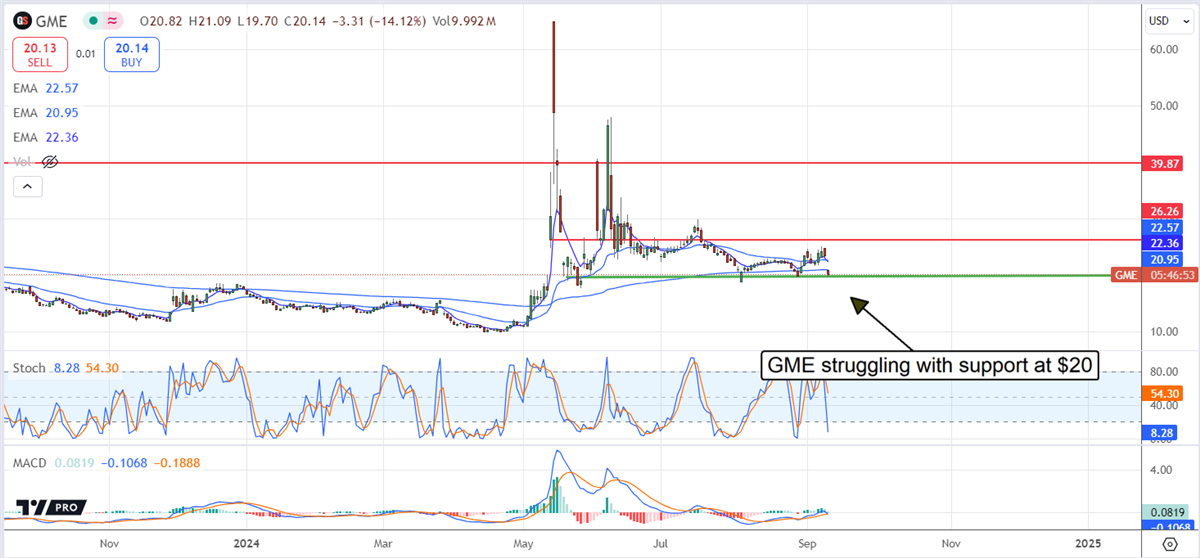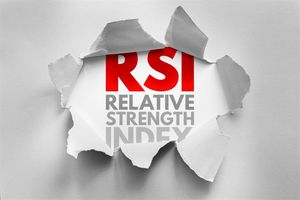
GameStop (NYSE: GME) posted another smoke-and-mirrors quarter, resulting in a normal market response: a fall. The results reveal a company trying hard to turn itself around but failing miserably and eating itself to death at shareholder expense—insufficient news to spark another meme-quality rally. Because the company has filed to sell another 20 million shares, investors should fear the worst: a move below critical support in the $20 range and a move back to $10, where this stock belongs.
GameStop Posted Profits, But Don’t Be Fooled
GameStop posted surprise profits for Q2, but don’t be fooled. The profits are the result of interest income related to its growing cash pile and inventory drawdowns and mask a weakening core business with no profits. Revenue of $790 million is down nearly 10% sequentially and 32% compared to last year on weakness in all operating segments. The core Software segment is down 47% YoY, with Hardware down 24.5% and Collectibles down 18%. Investors should expect revenue to continue falling on a YoY basis because of retail trends and the company’s decisions to optimize its footprint, aka closing down stores.
The margin news is mixed. The gross margin widened due to inventory drawdowns but was offset by increased SG&A as a percentage of revenue. SG&A increased by 620 basis points to 33.9%, suggesting staffing cuts and other cost-reducing actions should also be expected. The company reported an adjusted profit of $0.01 or $0.10 above the consensus reported by MarketBeat but due entirely to interest income. Backing that out, the operating results are a loss and not expected to improve materially without a significant change in consumer traffic. GameStop did not offer guidance or a conference call.
GameStop Builds Cash, Dilutes Value, And Isn’t Stopping
GameStop’s balance sheet highlights include a significant build in cash, about 379% to $4.204 billion, and a resulting increase in shareholder equity, but that is where the good news ends. Other highlights include a 27% increase in the average YoY share count compounded by a 30% reduction in equity adjusted for the cash. The takeaway is that the company has more money on the balance sheet, but each share is worth less.
Leverage remains low, and the company is well-capitalized. However, with no profits in the core business and meager earnings from interest, the best we can expect is that dilution will steady, and we know that it won’t. The company’s filing for 20 million shares will dilute by nearly 5% and may not be the last offered. The roughly $4.7 billion the company will have after the sale is small potatoes and unlikely to be sufficient to alter the company’s trajectory.
GameStop Heads Lower, Analysts Lower Their Price Targets
GameStop analysts haven’t had much good to say, and the trend isn’t changing. The single analyst tracked by MarketBeat with a rating is Wedbush, which lowered its target to $10 or about a 50% downside from recent action. The market may find support at $15 because that’s where the book value is today.
GameStop shares may be testing the $15 level soon. The market struggles to sustain support at the $20 level, which is the critical target. A move below that level will undercut market confidence and likely lead to massive short-selling. In that scenario, the stock could plummet into the low single-digit range, $4 billion in cash or not.







